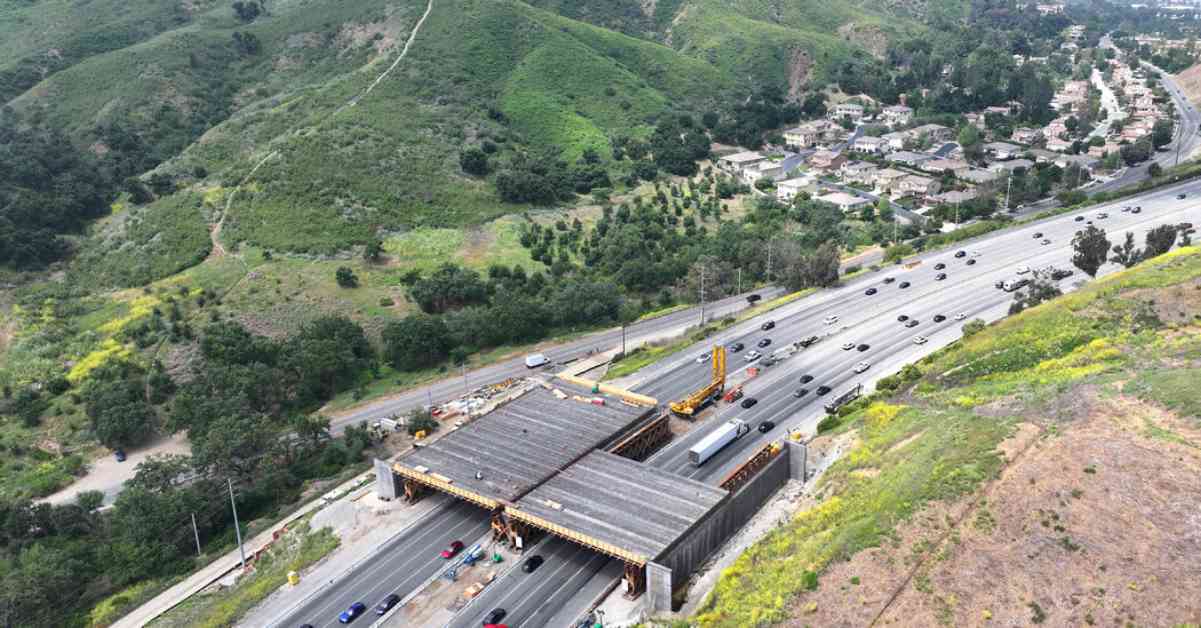An enormous wildlife overpass is currently under construction in Southern California near Agoura Hills, and it’s not just an ordinary bridge. The Wallis Annenberg Wildlife Crossing is more than just a structure; it’s a crucial project for the ecosystem’s future survival, according to Beth Pratt, the California regional executive director for the National Wildlife Federation.
This massive overpass, spanning 10 lanes of Highway 101, is designed to provide a safe passage for various wildlife species such as mountain lions, coyotes, deer, snakes, rabbits, and butterflies. The goal is to allow these animals to move freely and safely through a landscape that is heavily crisscrossed by major roads. The completion of this $92 million project is expected in 2026, connecting the Santa Monica Mountains and the Simi Hills.
The significance of the Wallis Annenberg Wildlife Crossing goes beyond just reducing collisions between wildlife and vehicles. By enabling animals to roam more widely in search of food, shelter, and mates, this overpass plays a vital role in restoring habitats and preserving California’s natural beauty for future generations to enjoy.
Governor Gavin Newsom highlighted the importance of projects like this in a statement earlier this year, emphasizing the need to reconnect and restore habitats for the benefit of both wildlife and humans. With over a million wildlife-vehicle collisions occurring in the United States each year, wildlife crossings have become increasingly popular as a solution to mitigate these incidents and protect both animals and people.
The Wallis Annenberg Wildlife Crossing is not only a testament to innovative infrastructure planning but also a symbol of hope for the coexistence of wildlife and humans in a rapidly developing landscape. As construction continues on this groundbreaking project, it represents a step towards a more sustainable and harmonious relationship between nature and civilization in Southern California.




